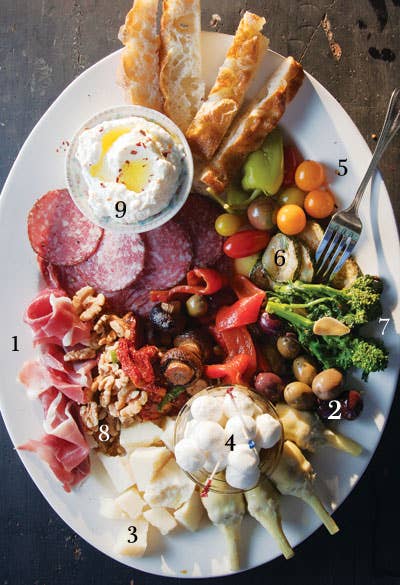
Art of Antipasti
Is there a better way to start a meal than with an abundant antipasti platter, artfully arranged with ruffles of prosciutto 1, briny olives 2, roasted red peppers, marinated artichokes and mushrooms and pepperoncini, chunks of Parmesan 3, fresh mozzarella 4, and whatever else catches the preparer's fancy? Antipasto, which means "before the meal," stretches back to medieval times in Italy, when diners used to mingle over finger foods, both sweet and savory, before sitting down to eat; early recipes included everything from sugared nuts to clotted cream to spiced ham. Over the centuries, antipasti became the domain of restaurants, which would set out dozens of stuffed, marinated, roasted, and grilled vegetables, meat, and fish.
"The aim is to excite rather than fill diners, who will then be inspired to choose yet more delicacies from the menu," writes Gillian Riley in The Oxford Companion to Italian Food (Oxford University Press, 2007). People rarely created such elaborate spreads at home, and when Italians emigrated to America, they would often set out a simple platter of store-bought ingredients to be shared as they eased into the meal. Over the years, home cooks and chefs have gotten craftier with their antipasti, incorporating more color (fresh tomatoes 5; sauteed zucchini 6 or broccoli rabe 7) and a range of flavors and textures (nuts 8; different kinds of salami; fresh ricotta 9 for slathering over bread). But the spirit of the dish is as generous and convivial as ever.
Keep Reading
Continue to Next Story










